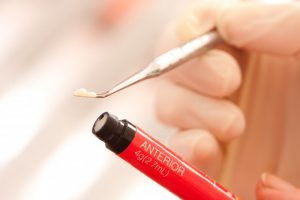 If the words “root canal” send shivers down your spine, you’re far from alone. Few dental procedures are as famous — or infamous — as root canal therapy. But in fact, this treatment may just be able to save your suffering tooth, relieve your pain, and help you once again enjoy a worry-free smile. Let’s talk more about root canal therapy so you can learn what it is, what it can accomplish, and whether there are any alternative treatments.
If the words “root canal” send shivers down your spine, you’re far from alone. Few dental procedures are as famous — or infamous — as root canal therapy. But in fact, this treatment may just be able to save your suffering tooth, relieve your pain, and help you once again enjoy a worry-free smile. Let’s talk more about root canal therapy so you can learn what it is, what it can accomplish, and whether there are any alternative treatments.
JB Dental Blog
What Is Root Canal Therapy? Are There Any Alternative Treatments?
November 30, 2018
Learn Why This Dentist Avoids Using Metal to Restore Teeth
November 24, 2018
 If you’ve had dental fillings placed in the past, you’re probably aware of the metal sheen they give when light reflects off of them. Metal fillings have been the standard in dentistry for a long time, largely because of their effectiveness at protecting teeth, availability of materials and long-term durability. However, they aren’t without their flaws.
If you’ve had dental fillings placed in the past, you’re probably aware of the metal sheen they give when light reflects off of them. Metal fillings have been the standard in dentistry for a long time, largely because of their effectiveness at protecting teeth, availability of materials and long-term durability. However, they aren’t without their flaws.
Instead of settling for silver (amalgam) fillings, you can get a restoration that is more effective, requires very little alterations to your existing tooth and does not sacrifice quality for aesthetics.
A Dentist Offers 4 New Year Resolutions to Protect Your Mouth!
November 18, 2018
 When people make resolutions for the new year, it’s typical that they don’t quite meet their goal. One of the main reasons they don’t follow through with resolutions is because they take on too much at once. Completely transforming a diet or daily routine doesn’t happen in a day, it takes time. If you’re looking for an effective way to improve your health without that much effort, oral health is a great place to start!
When people make resolutions for the new year, it’s typical that they don’t quite meet their goal. One of the main reasons they don’t follow through with resolutions is because they take on too much at once. Completely transforming a diet or daily routine doesn’t happen in a day, it takes time. If you’re looking for an effective way to improve your health without that much effort, oral health is a great place to start!
To help you get started, here are 4 resolutions from a dentist.
Discover the Best Way to Replace Missing Teeth
October 15, 2018
 If you have one or more missing teeth, you may hesitate to fill in the gaps. You may reason that you still have enough teeth to chew food, and you may not be that concerned about aesthetics. However, even one missing tooth can serious oral health problems! Let’s talk about why you should speak to a dentist about restoring your smile and the treatments that may provide a suitable way to replace missing teeth.
If you have one or more missing teeth, you may hesitate to fill in the gaps. You may reason that you still have enough teeth to chew food, and you may not be that concerned about aesthetics. However, even one missing tooth can serious oral health problems! Let’s talk about why you should speak to a dentist about restoring your smile and the treatments that may provide a suitable way to replace missing teeth.
Does Your Dental Insurance Cover Invisalign? Well, Maybe
October 2, 2018
 Are you tired of seeing your crooked teeth every time you smile at yourself in the mirror? Millions of people have used Invisalign to discreetly reposition their pearly whites into their proper places. This comfortable, fast, and convenient treatment may be able to help you as well. Still, you may be concerned about fitting Invisalign into your budget. Will your dental insurance help? Are there other ways to mitigate the cost of your treatment? Let’s talk about these important questions.
Are you tired of seeing your crooked teeth every time you smile at yourself in the mirror? Millions of people have used Invisalign to discreetly reposition their pearly whites into their proper places. This comfortable, fast, and convenient treatment may be able to help you as well. Still, you may be concerned about fitting Invisalign into your budget. Will your dental insurance help? Are there other ways to mitigate the cost of your treatment? Let’s talk about these important questions.
